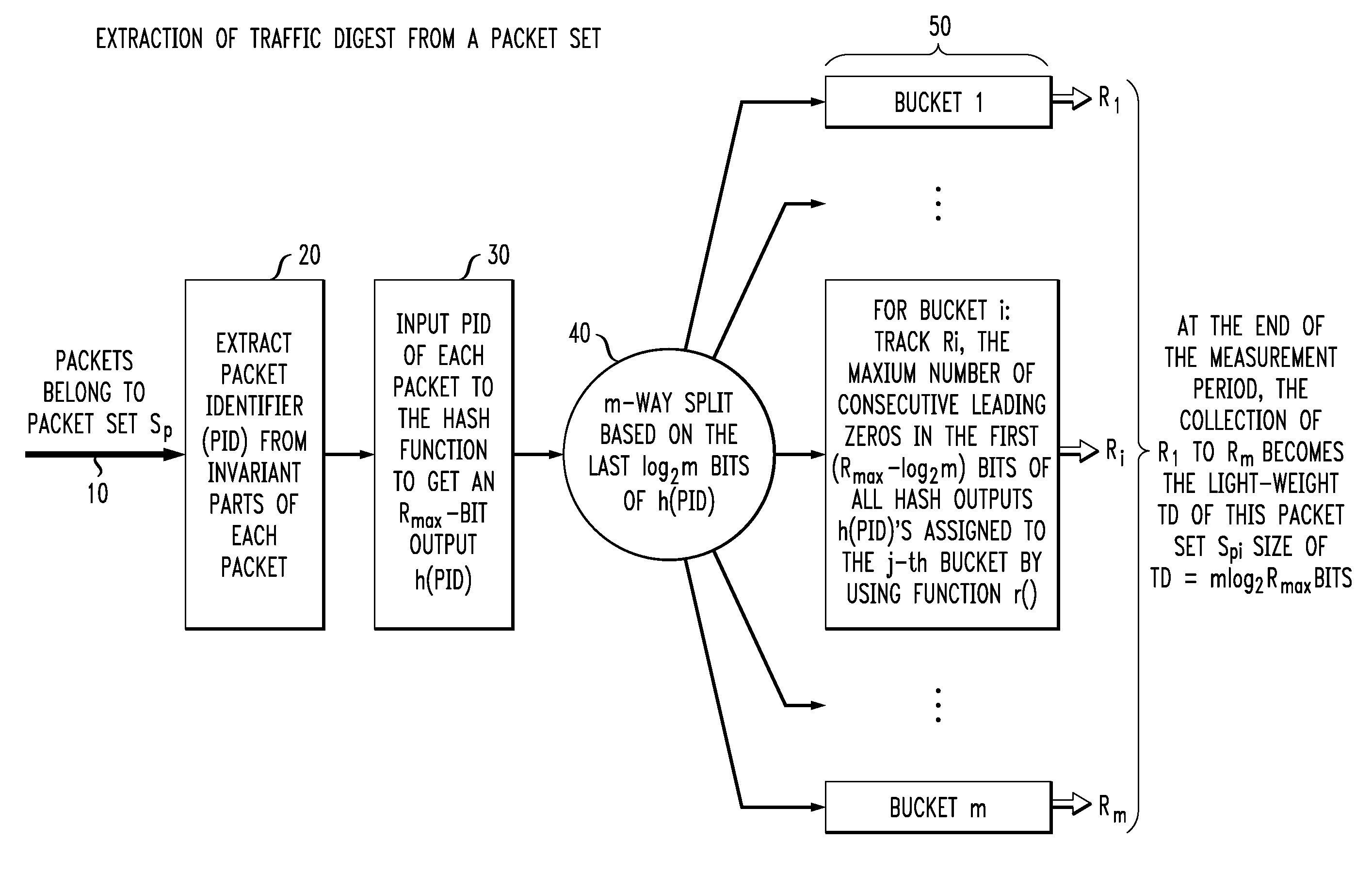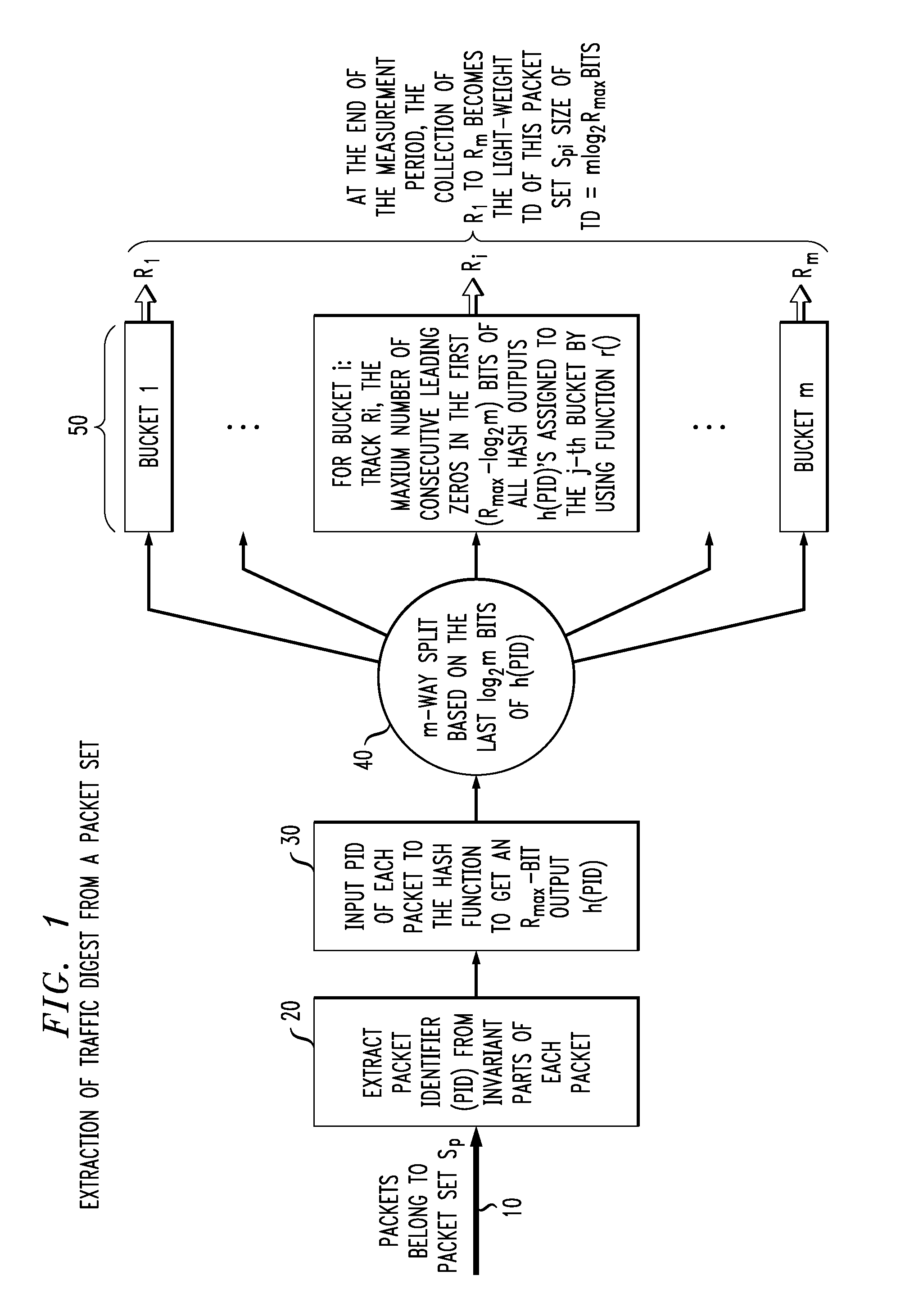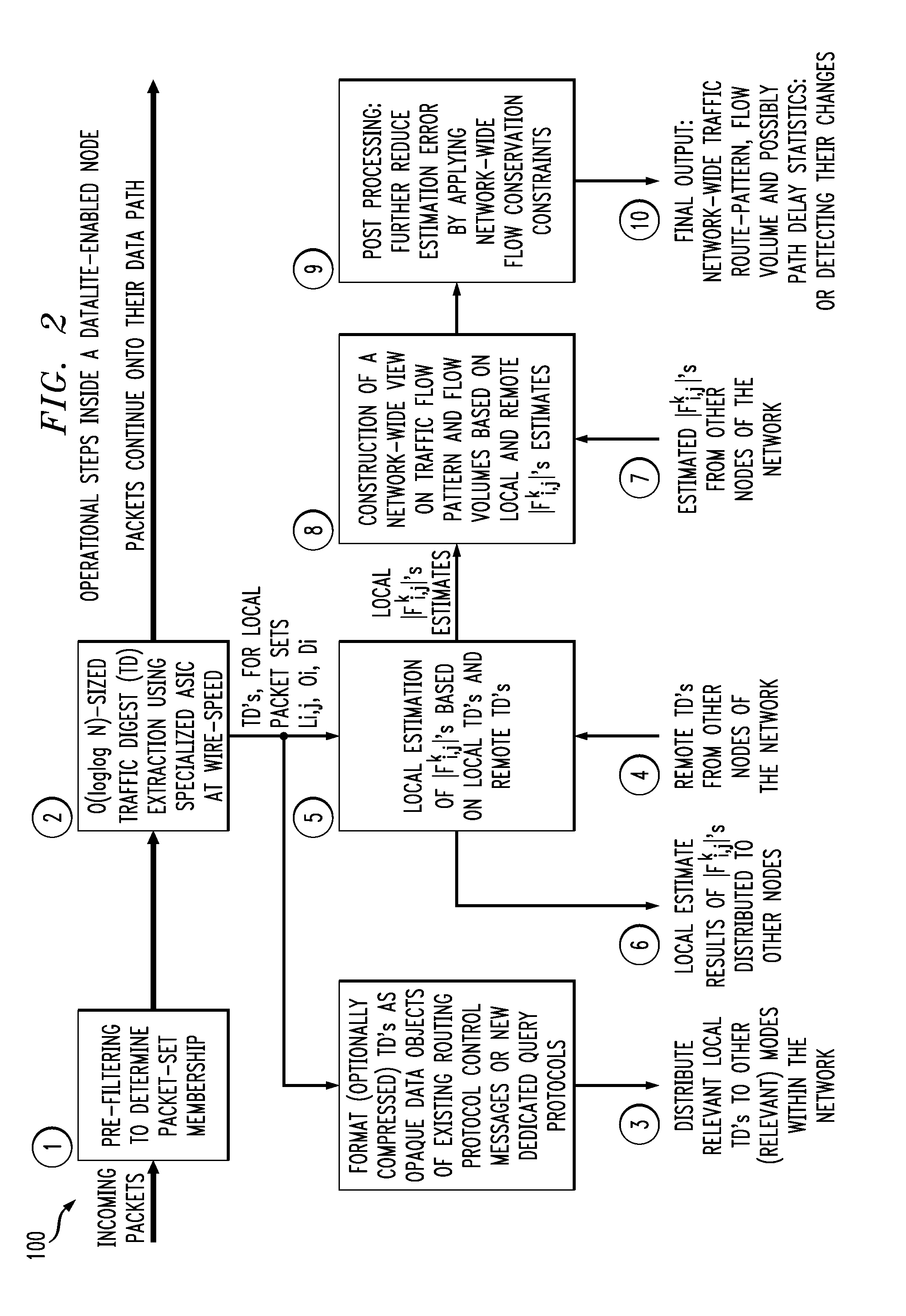High-speed traffic measurement and analysis methodologies and protocols
a traffic measurement and analysis technology, applied in the field of communication networks, can solve the problems of network operators losing their grasp of what exactly happens in these networks, unable to catch up with the operating speed and large-scale deployment of these networks, and reducing the requirements for system memory and communication bandwidth for datalite, so as to achieve the effect of reducing the overhead of communications and reducing the requirements for datali
- Summary
- Abstract
- Description
- Claims
- Application Information
AI Technical Summary
Benefits of technology
Problems solved by technology
Method used
Image
Examples
Embodiment Construction
[0018]The present invention is a methodology for providing improved efficiency for network measurement and analysis in data packet networks. Although an exemplary embodiment of the invention is described in connection with conventional high speed networks, it would be apparent to those skilled in the art that the present invention is applicable to other networks such as wireless networks and transportation networks.
[0019]While the ability to answer a trajectory query for any given individual packet was considered to be necessary for the designers in [Snoe 01] to support IP traceback, the inventors herein argue that it is an overkill for most traffic measurement / analysis applications, including IP traceback. The argument is based on the observation that, in most of these applications, it suffices to know the trajectory and / or the traffic volume of a given group of packets, or a so-called traffic aggregate instead of those of a bunch of individual, isolated packets. While one may argu...
PUM
 Login to View More
Login to View More Abstract
Description
Claims
Application Information
 Login to View More
Login to View More - R&D
- Intellectual Property
- Life Sciences
- Materials
- Tech Scout
- Unparalleled Data Quality
- Higher Quality Content
- 60% Fewer Hallucinations
Browse by: Latest US Patents, China's latest patents, Technical Efficacy Thesaurus, Application Domain, Technology Topic, Popular Technical Reports.
© 2025 PatSnap. All rights reserved.Legal|Privacy policy|Modern Slavery Act Transparency Statement|Sitemap|About US| Contact US: help@patsnap.com



